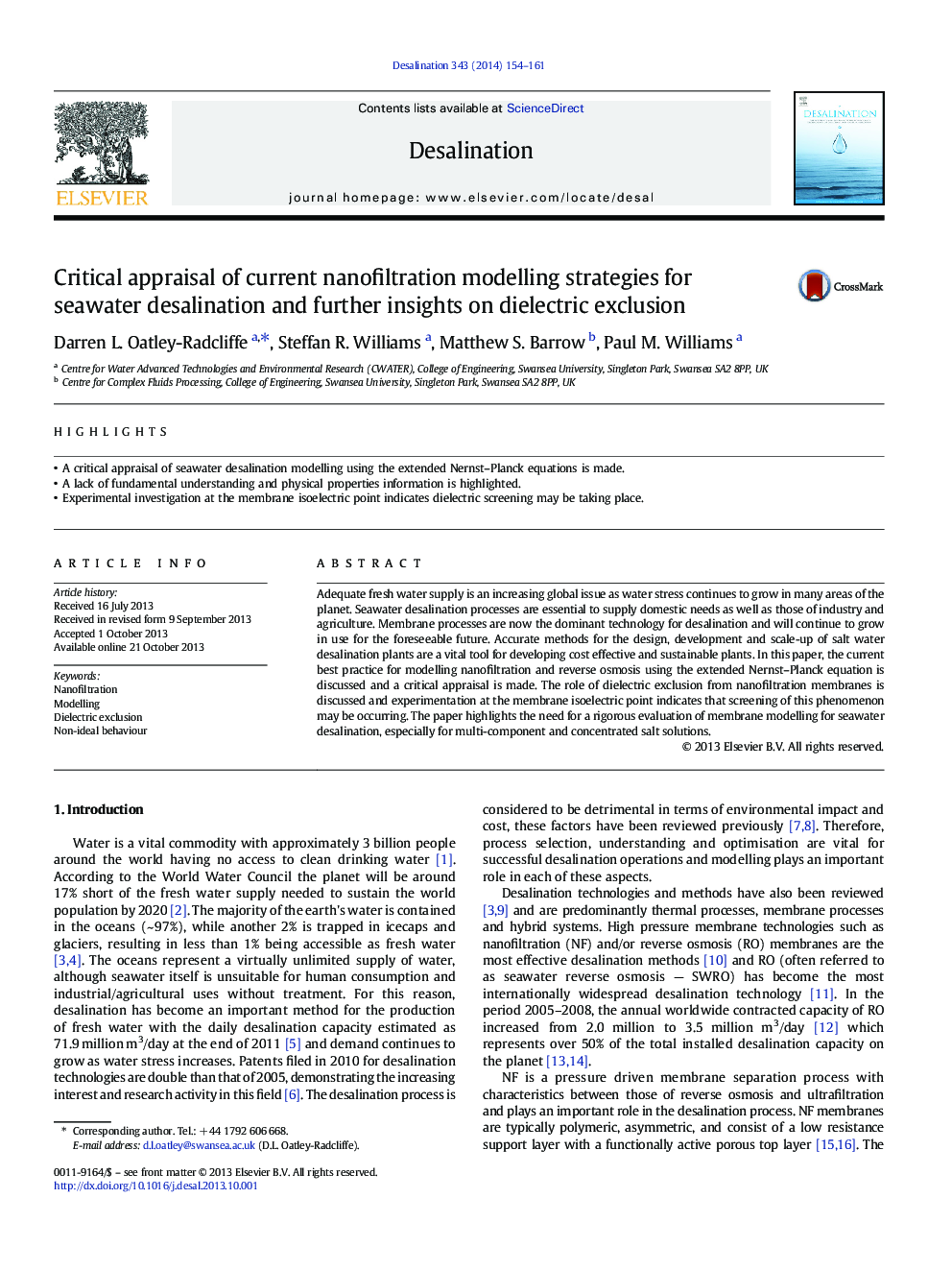| Article ID | Journal | Published Year | Pages | File Type |
|---|---|---|---|---|
| 623557 | Desalination | 2014 | 8 Pages |
•A critical appraisal of seawater desalination modelling using the extended Nernst–Planck equations is made.•A lack of fundamental understanding and physical properties information is highlighted.•Experimental investigation at the membrane isoelectric point indicates dielectric screening may be taking place.
Adequate fresh water supply is an increasing global issue as water stress continues to grow in many areas of the planet. Seawater desalination processes are essential to supply domestic needs as well as those of industry and agriculture. Membrane processes are now the dominant technology for desalination and will continue to grow in use for the foreseeable future. Accurate methods for the design, development and scale-up of salt water desalination plants are a vital tool for developing cost effective and sustainable plants. In this paper, the current best practice for modelling nanofiltration and reverse osmosis using the extended Nernst–Planck equation is discussed and a critical appraisal is made. The role of dielectric exclusion from nanofiltration membranes is discussed and experimentation at the membrane isoelectric point indicates that screening of this phenomenon may be occurring. The paper highlights the need for a rigorous evaluation of membrane modelling for seawater desalination, especially for multi-component and concentrated salt solutions.
